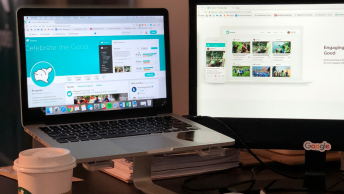Adding how-to video content to your brand’s content creation is a great way to boost your brand’s visibility. These videos also prove to your target audience that you have information worth sharing in a quick, user-friendly format.
How to Create Useful How-To Video Content: Essential Toolbox
Adding video content to your brand can be a great way to draw in your target audience. Creating how-to video content will be your best bet for making connections with the people who watch your videos.

Research shows that YouTube how-to searches have been growing by 70% every year. People want to know how to do things, and if you have a skill, creating a video to teach others will create traction.
How-to videos convert audiences incredibly well, and nearly one in three millennials say they purchased a product as a result of watching a tutorial or how-to video about the product. Also, unlike viral videos, how-to video content is easy to research for popularity.
Your how-to video content will be affordable to make and rank well in Google search results. Plus, if it becomes popular, you’ll get a video thumbnail in the search results that will stand out when people search for your keyword and will give you a lot of brand exposure.
SEE ALSO: How to Improve Your Blog Posts With YouTube Videos
Research and Inspiration
The key to remember in the research stage for your how-to videos is to figure out what your audience wants to know. This includes finding out what their typical questions are. Then you can review this information to find which queries will lend themselves to how-to video content.
Serpstat
Serpstat is a keyword research and all in one SEO analytics platform. It gives more in-depth insight into the searching behavior of people on the internet. Serpstat also includes a separate section with people’s questions.
Just type any term into the search box and proceed to the ‘search questions’ section right behind the ‘content marketing’ tab. You’ll also find a tag cloud that is helpful for showing the most popular words that have a history of appearing in questions containing your primary term.
Finding these words can help you to organize your content by main topic, audience, and related interests.
Serpstat can also suggest related terms using their powerful semantic analysis feature. You can find these by checking the ‘cluster research’ section to expand your primary word further. This will give you a list of highlighted questions that you can research to find even more related how-to questions.
Answer the Public
Answer the Public is a free visual keyword research tool. It goes through Google’s auto-suggest results (the results you see in a drop-down menu when you search in Google’s search box) and uses this information to retrieve question-type queries. These search queries are visualized in a mind map that is based on the question modifier.
When using this information for how-to video content, keep an eye on the ‘how’ section.
BloomBerry
BloomBerry goes through over 300 million questions asked on online forums and discussion boards like Quora, Reddit, and Amazon’s Q&A section. This site can help you to uncover the needs and concerns of your target audience by finding the most popular questions people tend to ask online.
The great thing about BloomBerry is that it doesn’t take your query as is. Instead, it will suggest related topics using its semantic analysis. For example, if your core word is ‘coat’, this tool will also look for questions that include ‘jacket.’
Creating and Editing
There are some great free tools out there that can cover the majority of your needs and will only take 30 to 60 minutes to compile your how-to video content. This is the typical time to refine your content if your video will be about three minutes in total length.
These tools will also add nice transitions and text overlay that will make your videos more enjoyable to watch. Plus, the more videos you create, the faster it will be to create the next one.
Remember, whenever you use a free image or video, you’ll need to make sure you credit the source. Usually, this won’t be required, but its still best to thank the creator and give them credit for their work.
ScreenFlow
ScreenFlow is an excellent option for screencasting. Being neither too primary or too overwhelming, ScreenFlow is a perfect combination of features that you require without a lot of distracting settings you don’t need.
The best features to use in ScreenFlow are basic screencasting, which offers a zooming in or out function to emphasize what you’re doing, and exporting the file in ‘save for web’ mode.
Animoto
Animoto can give you significant visual effects without the need for a big budget. These visual effects can include titles, subtitles, text, and animation. You can also import screenshots, quotes, or text and put together clips within minutes.
Animoto is a great time saver and creativity booster. It allows you to explore various templates and find a unique video format. Animoto even offers seasonal models, so you can add holiday themes to your holiday how-to video content.
YouTube Video Editor
Putting the pieces of your how-to video content together doesn’t require the need to download or learn new software. The YouTube Video Editor will let you upload your screencasts, animations, and audio files. Then you can put them together in one solidly constructed how-to video.
There are quite a few cool perks that come with YouTube’s free online video editor, like using Creative Commons music in your video, adding transitions that go from step to step in your video instructions, overlaying your videos with text, uploading images to use in videos, and remixing with Creative Commons videos to make your instructions entertaining.
Final Thoughts
Adding a little boost to your brand through how-to video content is a great way to gather in a fresh new audience. These videos are gaining in popularity as people are choosing to watch the content they’re looking for instead of reading it. Creating these videos may take a little more time than writing them, but might give you more significant exposure over time.
Would you rather read a how-to article or watch a how-to video?











